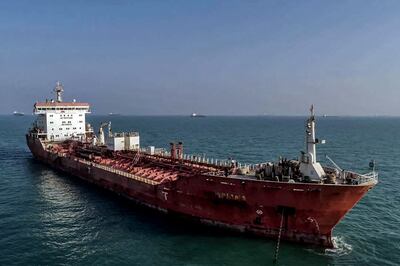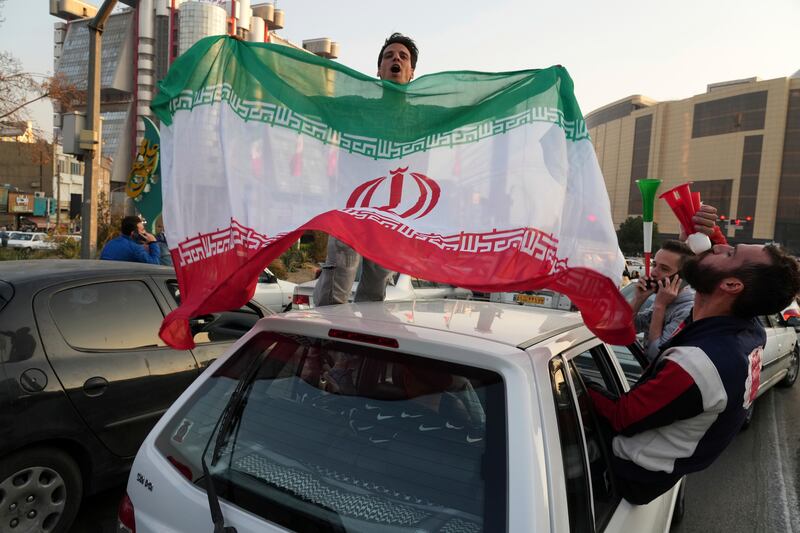Iran needs only a draw tomorrow against its old adversary, the US, to proceed beyond the group stage in the World Cup.
While the US may overcome Iran on a football pitch, its “maximum pressure” sanctions have so far failed to earn an American victory over the Islamic Republic.
However, as massive protests continue to sweep the country, it’s Tehran that fears being knocked out.
The unrest that has followed the death of Mahsa Amini in police custody on September 16 is the most serious challenge to the Iranian government since the 1979 revolution and ensuing invasion by Saddam Hussein’s Iraq. That triggered a colossal oil shock and global recession, and political consequences that shape the Middle East today.
Reverberation of what is happening across Iran can also potentially deliver another shock, not only to the Iranian economy but also to the global energy, market amid an already slowing world economy.
From the anti-Ruhollah Khomeini article on January 7, 1978 that triggered the first large protests, to the final fall of the Shah’s regime, four hundred days elapsed. Sixteen years passed between the 1963 opposition to the “White Revolution” which promised land reform and industrialisation, and the Shah’s flight into exile. Twenty-six years separated the western-backed coup against prime minister Mohammad Mossadegh that made Mohammad Reza Pahlavi supreme monarch, and his dethronement. Revolutions are predicted too often or not at all.
Amini was killed barely two months ago. But the current uprising follows numerous other episodes: the student protests of July 1999, the Green Movement against 2009’s fraudulent election, the widespread unrest of 2017-18 and demonstrations against fuel price rises and poor economic conditions in 2019 in which 1,500 people were reportedly killed.
On the one hand, this might suggest Tehran is well-versed in overcoming dissent, making it likely to do so again. It may believe it has learnt from the Shah’s failure to prevent revolution and it has a decade of experience in assisting the bloody suppression of the Syrian uprising.
But on the other hand, it indicates a worsening cycle of economic decline and political and social repression. The Green Movement called for a fair election; today protesters want the end of the regime. This combines an elderly and sclerotic coterie around supreme leader Ali Khamenei, himself rumoured to be seriously ill and weighing his potential successors, and a Revolutionary Guard split between ideological hardliners forged in the Iran-Iraq War and profit-seeking opportunists.
Last June’s selection of Ebrahim Raisi as President featured a very low turnout and no credible opponents. The elimination of the reformist, moderate and much of the conservative current from power has removed the system’s traditional pressure valve.
Even several plausible Revolutionary Guard candidates were prevented from running in the election, such as Saeed Mohammad, a younger guardsman with no active military experience but a strong line in running the force’s businesses, notably the engineering group Khatam Al Anbia.
So what next, and what does it mean for global energy markets?
In January and August, brief windows opened for a revival of the Joint Comprehensive Plan of Action (JCPOA) over Iran’s nuclear programme. Now, the protests and their violent suppression make it very unlikely that the administration of US President Joe Biden will seriously resume the talks. And that means no sanctions relief, no additional oil on the market and a ramping-up of the country’s uranium enrichment.
As enrichment crosses different thresholds, the returned Israeli premier Benjamin Netanyahu will no doubt lobby for military action. That would be disastrous for the protesters. It would be excellent for Vladimir Putin, whose flailing war in Ukraine can only be rescued by a worsened global energy crisis. But the European ban on Russian crude oil, in effect from 5 December, means Iran will face more competition in China, its only remaining paying customer.

Earlier this month, an Israeli-managed tanker carrying gas oil was hit by a suspected Iranian explosive drone off the coast of Oman. This could mark a resurgence of attacks that struck shipping in the Gulf of Oman and Red Sea, and oil facilities in Saudi Arabia, mostly in 2019 and 2021. A full-scale Israeli or American military strike on nuclear sites would no doubt trigger much wider retaliation against energy assets in the GCC and Iraq.
As for the protests, the regime may succeed in crushing them or riding them out, as before. But they will undoubtedly return, and in even greater force. The system can meet neither people’s social aspirations nor their economic needs. Its economic failings are bound up with its ideology — the confrontation with the US — and its support base, with the Revolutionary Guards and clerical foundations controlling private large businesses.
A military coup by the guards or the insertion of their favoured candidate post-Khamenei, would lead to greater violence in the short term. This might be followed by corrupt isolationism milking what remains of the sanctioned economy. A more imaginative leader might later try to engineer a calibrated re-opening, with moderate nuclear concessions in return for eased oil exports.
The best chance for the protesters to trigger fundamental change is for a split in the regime, or for some of the security forces to change sides. That could lead to a civil war, although unlike in Syria, a distracted Moscow would be unable to send much material help. Iran’s remaining oil exports of 800,000 to 1 million barrels per day, and its significant gas sales to Turkey, would be threatened. The conflict would probably also draw in Iraq, Opec’s second-largest producer.
Most optimistically, some kind of transition could lead to a new government that properly represents the people. That would unlock Iran’s enormous potential in oil, gas, renewables and industry. It would become a central piece in the world energy system between the Caspian and the Gulf, the Middle East and the 1.8 billion energy-hungry people of South Asia.
For now, the situation is perilous. European and US attention is fixed on the war in Ukraine. But between nuclear brinkmanship and brave and furious demonstrators, a yet deeper energy crisis lurks.
Robin M. Mills is CEO of Qamar Energy, and author of The Myth of the Oil Crisis






